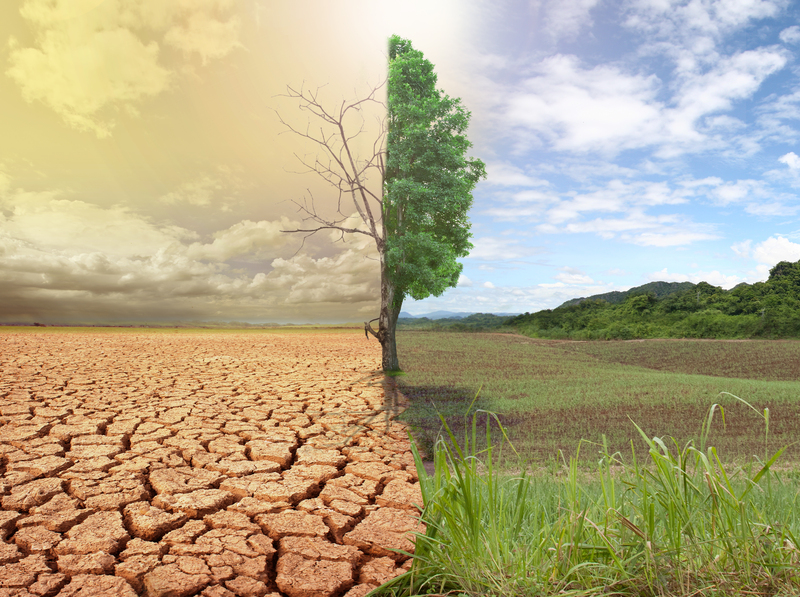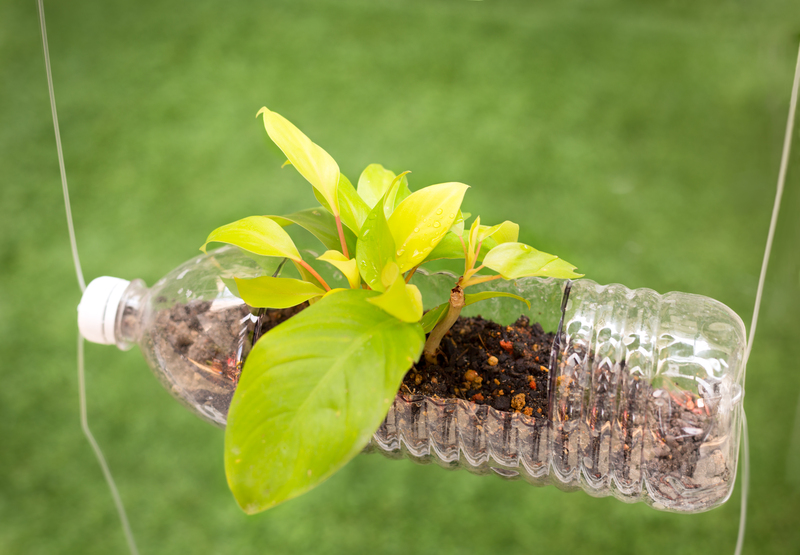Master Home Recycling With These Top Tips
Recycling at home is more than just tossing old papers and plastic bottles into a bin. With growing concerns about waste and climate change, every household has an essential role to play in sustainable living. Mastering home recycling not only helps the environment but also saves resources, reduces landfill pressure, and can even save money. Ready to transform your waste management game? Here's your comprehensive guide to home recycling success - packed with expert tips, easy tricks, and answers to all your recycling questions.

Why Home Recycling Matters
If you've ever wondered why should I recycle at home, consider this: the average person produces roughly 4.5 pounds of waste daily. That adds up to more than 1,600 pounds a year! Without proper management, much of this waste ends up in landfills, contributing to pollution and greenhouse gas emissions. By making recycling part of your daily routine, you:
- Reduce landfill waste
- Conserve natural resources
- Minimize pollution
- Lower your carbon footprint
- Support a circular economy
*Home recycling is a powerful action that collectively creates a significant impact.*
Understanding the Basics of Recycling at Home
Before diving into advanced tips, it's crucial to get back to basics: What CAN and CAN'T you recycle? Every city or county may set its own rules, so always check your local guidelines. In general, the following categories are widely accepted:
- Papers and Cardboard: Newspapers, magazines, office paper, cereal boxes, and flattened cardboard.
- Cans and Metal: Aluminum cans, tin cans, clean foil, and some food containers.
- Plastic Containers: Bottles, jugs, tubs, and jars (check numbers 1 & 2 for most curbside programs).
- Glass: Clear and colored glass bottles and jars (verify with your program; some don't accept glass).
Items like plastic bags, food-soiled materials, and certain packaging often contaminate the recycling stream. When in doubt, throw it out to prevent "wish-cycling"--placing unrecyclable items in the recycling bin in hopes they'll be processed.
Top Tips to Master Home Recycling
Let's level-up your recycling habits with these top home recycling tips! Whether you're a newbie or looking to perfect your strategy, these steps can help you master the art - and science - of home recycling.
1. Create a Recycling Station
Convenience is the secret to recycling success at home. Choose a spot near your kitchen or main living area where most waste accumulates. Set up separate bins for recyclables, compostables, and trash. Clearly label each to avoid confusion. If possible, add a bin for items that require special handling (batteries, electronics).
2. Know What to Recycle (And What Not To)
Not everything you toss can be recycled! Check with your local recycling program to confirm accepted materials. Generally, avoid recycling:
- Plastic bags and films
- Styrofoam (polystyrene)
- Greasy pizza boxes
- Broken glass (mirrors, Pyrex, drinking glasses)
- Ceramics, light bulbs, batteries (unless in designated bins)
Pro tip: Collect plastic bags and films separately and return them to grocery store drop-offs if available.
3. Rinse and Clean Your Recyclables
Residue from food or liquids can ruin entire batches of recycling. Always rinse out bottles, cans, and jars before tossing them in the recycling bin. Make sure they're free from food scraps and relatively dry. This simple habit makes your recyclables more valuable and less likely to attract pests.
4. Flatten and Break Down Boxes
Cardboard boxes take up a lot of space in your recycling bin. Flatten them out to get more in each collection. Remove any plastic tape, packing peanuts, or plastic inserts, as these generally aren't recyclable with paper and cardboard.
5. Separate Materials When Needed
While many curbside programs accept single-stream recycling (all together), separating glass from paper and plastic can improve the quality and odds of your materials being recycled. Keep an eye on local rules as processes change over time.
6. Compost Food Scraps and Organics
You can reduce your waste by up to 30% just by composting food scraps and yard trimmings at home! Not only does this keep organics out of landfills, where they generate methane, but it creates rich soil for gardening. Set up a backyard composter or check if your city offers curbside compost collection.
7. Dispose of Hazardous Waste Responsibly
Many common household items can't go in your curbside recycling bin. Paints, pesticides, batteries, electronics, and certain lightbulbs contain hazardous materials. Visit your local waste authority or city website to learn about designated collection events or drop-off locations.
Advanced Home Recycling Strategies
Once you've mastered the basics, challenge yourself and your family with these advanced strategies for home waste reduction and recycling.
1. Practice Precycling: Smart Shopping
The best way to control waste is before you buy. Shop with waste minimization in mind:
- Choose products with minimal, recyclable, or reusable packaging
- Buy in bulk to reduce individual packaging
- Opt for concentrated products (cleaners, detergents)
- Avoid single-use plastics and paper goods
Remember: It's easier to avoid waste than to dispose of it responsibly!
2. Reuse Before You Recycle
The second 'R' in Reduce, Reuse, Recycle often gets overlooked. Ask yourself: Can this item be repurposed? Glass jars become kitchen storage, cardboard rolls become craft supplies, and plastic tubs can organize household items. Reusing extends the life of products and reduces demand for new resources.
3. Involve the Whole Family
Education is key to lasting success: Teach children and housemates the value of recycling, composting, and reducing waste. Make recycling a fun family activity--create a chart to track progress or reward eco-friendly behavior!
4. Stay Up-to-Date on Local Guidelines
Recycling rules and technology change over time. Stay informed by:
- Subscribed to city or county waste newsletters
- Checking updates on your municipality's recycling website
- Attending public information sessions or webinars
5. Donate and Swap
Items still in good condition don't belong in the recycling bin! Organize a garage sale, swap with friends and neighbors, or donate to charities. This lowers landfill burden and helps others in your community.
Common Recycling Mistakes to Avoid
Even the most enthusiastic recyclers can fall into traps. Avoid these common home recycling errors:
- Wish-cycling: tossing items in the bin, hoping they'll be recycled
- Bagged Recycling: Placing recyclables in plastic bags (most sorting facilities can't process them)
- Mixing in Non-Recyclables: Like food-soiled containers or certain plastics
- Not cleaning recyclables: Dirty items spoil batches and may be landfilled
- Ignoring local guidelines: Rules vary, so check before you toss!
Boosting Home Recycling: Tools & Resources
Empower yourself with the right tools and technology:
- Label your bins clearly for different materials
- Use multi-compartment containers for easy sorting
- Download recycling reminder apps or calendars for pickup dates
- Install a compost pail in your kitchen
- Set up dedicated areas for special items like batteries and textiles
For added ease, many cities offer **online recyclability checkers** or apps to help you determine where items belong.
Sustainable Habits Beyond Home Recycling
Mastering home recycling is just one piece of a larger sustainability puzzle. Expand your positive impact by adopting these habits:
- Shop secondhand for clothes, furniture, and electronics
- Reduce single-use items by investing in reusables (water bottles, coffee cups, bags)
- Repair and upcycle damaged items rather than discarding
- Support local recycling programs and eco-friendly legislation

Frequently Asked Questions About Home Recycling
Can I recycle plastic bags and wrap at home?
No - most curbside programs do not accept plastic bags and films. They clog sorting machinery and should be returned to dedicated collection bins at grocery stores or recycling centers.
Should I remove labels or lids before recycling?
Most programs accept bottles and cans with labels. However, plastic lids or caps should be removed because they are often made from different types of plastic. Check your local rules - some places, now ask for the cap to be left on.
What do recycling symbols on packaging mean?
Symbols (like the chasing arrows triangle) indicate the type of material used, BUT they don't guarantee your program accepts that item. Always refer to your city's recycling guide.
Can pizza boxes be recycled?
Only clean, grease-free portions should be recycled. Oil and cheese contaminate paper recycling. Compost or trash the greasy parts!
Conclusion: Start Mastering Home Recycling Today!
Recycling at home is the foundation for a healthier planet and a more sustainable future. By integrating these top tips and making recycling second nature, you set a positive example for your family, neighbors, and community.
Remember: It's not about perfection but about making progress. Every can, bottle, or box you recycle helps reduce demand for new materials, conserves energy, and protects our environment. With a bit of planning and education, you can master household recycling and leave a greener legacy for generations to come.
Ready to start? Set up your recycling station, review your local rules, and share your tips with friends and neighbors. Together, we can make every day Earth Day!